Recent Publications

Nasser Sakran: Factors Influencing Referral for Bariatric Surgery by Primary Care Physicians in Northern Israel (Obes Surg . )
Obesity is a chronic metabolic disease with global distribution among adults and children which affects daily functioning and ultimately quality of life. Primary care physicians (PCPs) provide an important role for the treatment of severe obesity. Better understanding of obesity and its treatment options may increase patients' referral rates to the various treatment modalities, including metabolic/bariatric surgery (MBS).
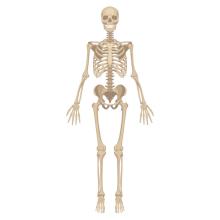
David Karasik: Shared genetic architecture highlights the bidirectional association between major depressive disorder and fracture risk (Gen Psychiatr . )
There is limited evidence suggesting that osteoporosis might exacerbate depressive symptoms, while more studies demonstrate that depression negatively affects bone density and increases fracture risk. Aims: To explore the relationship between major depressive disorder (MDD) and fracture risk.

Ory Wiesel: The Transition of Resident Surgeons to Special Forces Resident Surgeons During Wartime - Preparedness Above all (Ann Surg . )
Surgical residency is a difficult and challenging path that requires years of focused training inside the controlled atmosphere of a teaching hospital. Surgical residents are taught to operate with precision, efficiency, and compassion in well-equipped operating rooms. On the other hand, the position of a special forces (SF) resident surgeon during war times exposes the surgical resident to a completely other set of problems and duties that extend far beyond the walls of a hospital. The SF residents surgeons are physicians who serve in one of the Israel defense forces (IDF) SF and have undergone rigorous warfare training prior to their surgical residency. They are being deployed during war time in the front lines and are brought to an austere environments out of their comfort zone where their abilities are being challenged constantly. The IDF medical personal are comprised of active-duty and reserve physicians who are called into service as needed. Herein, we describe our insights into reserved SF residents surgeons called upon duty during the Swords of Iron war

Gassan Moady, Igor Yakubovich, Shaul Atar: Safety and Efficacy of Early SGLT2 Inhibitors Initiation in Diabetic Patients Following Acute Myocardial Infarction, a Retrospective Study (J Cardiovasc Pharmacol Ther . )
Sodium-glucose cotransporter- 2 (SGLT2) inhibitors have become a cornerstone in heart failure (HF), Type 2 diabetes mellitus (T2DM), and cardiovascular disease (CVD) management. In the current retrospective study, we aimed to assess efficacy and safety of SGLT2 inhibitors early following acute myocardial infarction (AMI).
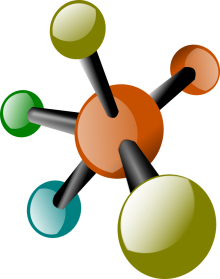
Lion Morgenstein: Long-Chain Lipids Facilitate Insertion of Large Nanoparticles into Membranes of Small Unilamellar Vesicles (Langmuir . )
Insertion of hydrophobic nanoparticles into phospholipid bilayers is limited to small particles that can incorporate into a hydrophobic membrane core between two lipid leaflets. Incorporation of nanoparticles above this size limit requires the development of challenging surface engineering methodologies. In principle, increasing the long-chain lipid component in the lipid mixture should facilitate incorporation of larger nanoparticles. Here, we explore the effect of incorporating very long phospholipids (C24:1) into small unilamellar vesicles on the membrane insertion efficiency of hydrophobic nanoparticles that are 5-11 nm in diameter.

Alon Gorenshtein, Tom Liba, Liron Leibovitch, Shai Stern: Intervention modalities for brain fog caused by long-COVID: systematic review of the literature (Neurol Sci .)
Individuals suffering from long-COVID can present with "brain fog", which is characterized by a range of cognitive impairments, such as confusion, short-term memory loss, and difficulty concentrating. To date, several potential interventions for brain fog have been considered. Notably, no systematic review has comprehensively discussed the impact of each intervention type on brain fog symptoms. We included studies on adult (aged > 18 years) individuals with proven long- COVID brain-fog symptoms from PubMed, MEDLINE, Central, Scopus, and Embase.
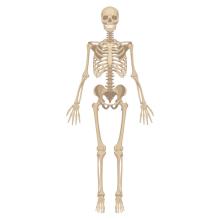
David Karasik: Septin 7 interacts with Numb to preserve sarcomere structural organization and muscle contractile function (Elife . )
Here, we investigated the mechanisms by which aging-related reductions of the levels of Numb in skeletal muscle fibers contribute to loss of muscle strength and power, two critical features of sarcopenia.
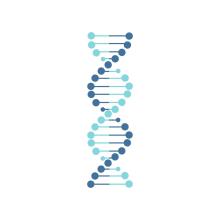
Nilabja Roy Chowdhury, Vyacheslav Gurevich, Meir Shamay: KSHV genome harbors both constitutive and lytically induced enhancers (J Virol . )
Kaposi's sarcoma-associated herpesvirus (KSHV) belongs to the gamma-herpesvirus family and is a well-known human oncogenic virus. In infected cells, the viral genome of 165 kbp is circular DNA wrapped in chromatin. The tight control of gene expression is critical for latency, the transition into the lytic phase, and the development of viral-associated malignancies. Distal cis-regulatory elements, such as enhancers and silencers, can regulate gene expression in a position- and orientation-independent manner. Open chromatin is another characteristic feature of enhancers. To systematically search for enhancers, we cloned all the open chromatin regions in the KSHV genome downstream of the luciferase gene and tested their enhancer activity in infected and uninfected cells.
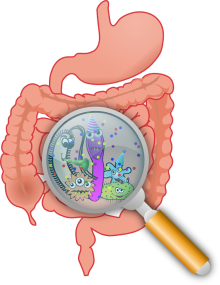
Omry Koren: A concept for international societally relevant microbiology education and microbiology knowledge promulgation in society (Microb Biotechnol .)
Microbes are all pervasive in their distribution and influence on the functioning and well-being of humans, life in general and the planet. Microbially-based technologies contribute hugely to the supply of important goods and services we depend upon, such as the provision of food, medicines and clean water. They also offer mechanisms and strategies to mitigate and solve a wide range of problems and crises facing humanity at all levels, including those encapsulated in the sustainable development goals (SDGs) formulated by the United Nations....
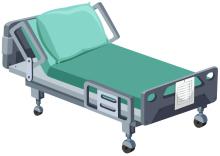
Rula Daood, Fadi Hassan, Mohammad E Naffaa: Should we aim to define a stage of "pre" Behcet's syndrome? (Int J Rheum Dis . )
Behect's syndrome (BS) is a multisystem syndrome characterized by recurrent oral and genital ulcers along with skin, musculoskeletal, ophthalmic, gastrointestinal, neurologic, and vascular involvements. Some of the manifestations can be severe and predispose the patients to organ-threatening or even life-threatening damage. At the most optimistic scenario, patients with BS can be diagnosed at the time of first presenting symptom when the clinical scenario is highly suggestive of BS and actually the patient fulfills one of the accepted sets of criteria. Unfortunately, some patients present with clinical features suggestive of BS but have other relevant differential diagnoses, especially when common features of BS, such as oral ulcers are absent, making the timely diagnosis of BS challenging, with subsequent delay in introducing appropriate therapy. Furthermore, in some cases, the irreversible damage might have occurred at the time of presentation. Ocular involvement with posterior uveitis and retinal vasculitis may cause blindness if not treat urgently and aggressively and neurologic and vascular involvements may cause significant morbidity or even mortality, even when identified early and treated appropriately. Therefore, it is of paramount importance to identify these high-risk patients one step before they become symptomatic. Is it a possible and realistic goal?
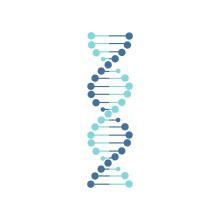
Aiob Ala: Enrichment for the POLE mutated against p53 wild subtype using clinicopathologic factors and cyclin B1 immunohistochemistry in endometrial cancer (J Gynecol Oncol . )
The Cancer Genome Atlas (TCGA) has provided a classification framework encompassing four distinct molecular types of endometrial cancer, each linked to prognosis. Despite this useful delineation, the Proactive Molecular Risk Classifier for Endometrial Cancer (ProMisE) has emerged as a pragmatic alternative. Based on immunohistochemical staining, the ProMisE classification elegantly categorizes endometrial tumors into four clinically relevant subtypes: mismatch repair-deficient, polymerase epsilon exonuclease (POLE) mutated, p53 wild type, and p53 abnormal. However, in this classification, distinguishing between POLE mutated and p53 wild subtypes requires sequencing.

Rabea Haddad, Edo Birati, Hiba Zayyad, Nizar Andria, Eyal Nachum, Erez Kachel, Ibrahim Marai: Outcomes of Transvenous Lead Extraction in a Referral Center in Northern Israel (Isr Med Assoc J . )
Cardiac implantable electronic devices (CIEDs) are increasingly being used; thus, there is an increasing need for transvenous lead extraction (TLE). Objectives: To summarize our experience with TLE at single referral center in northern Israel.
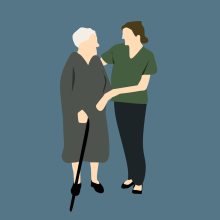
Bahaa N Francis: Post-COVID-19 patients in geriatric rehabilitation substantially recover in daily functioning and quality of life (Age Ageing .)
After an acute infection, older persons may benefit from geriatric rehabilitation (GR). This study describes the recovery trajectories of post-COVID-19 patients undergoing GR and explores whether frailty is associated with recovery.





